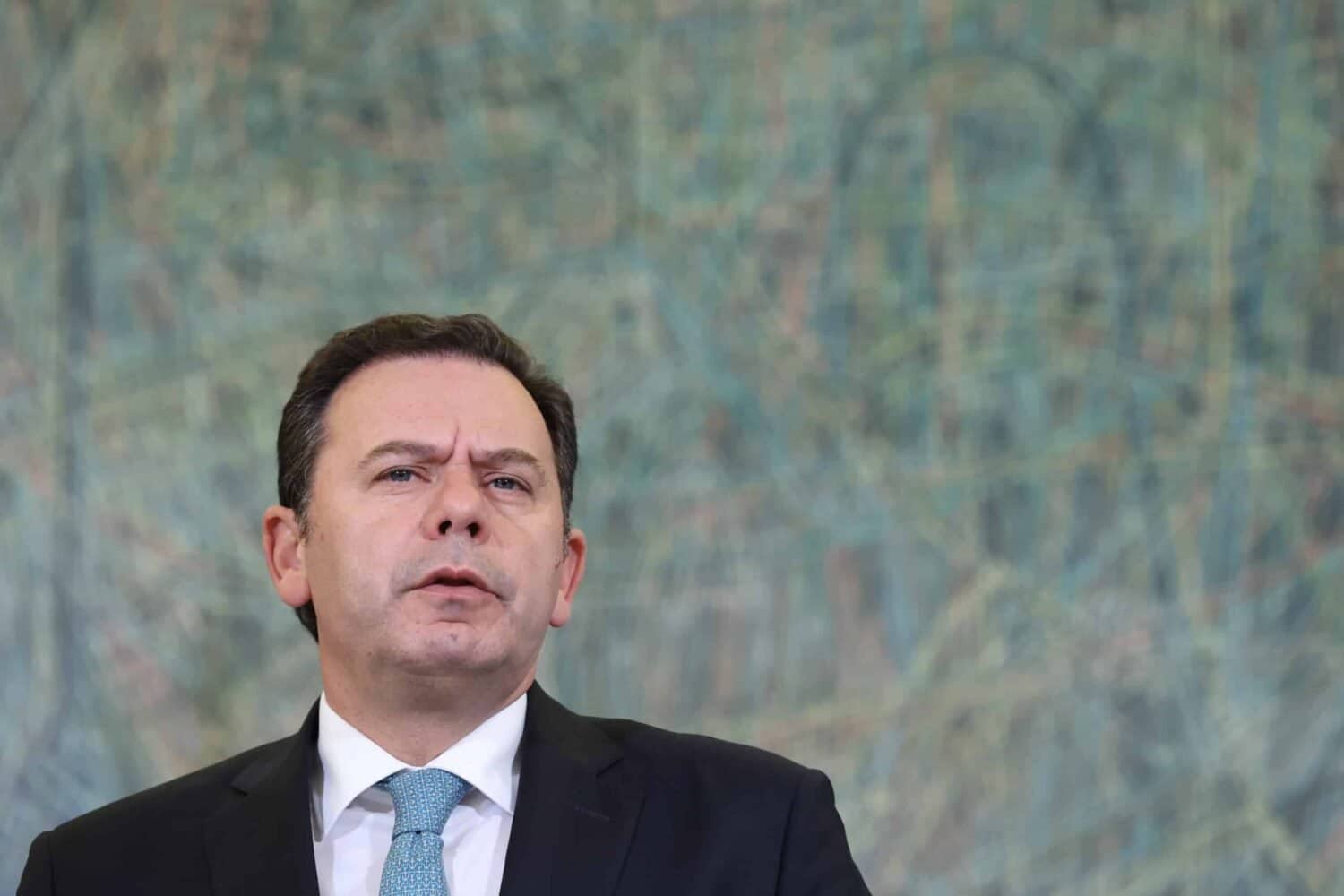Portugal’s AD government makes decisions ‘on hold’ for more than 50 years
Portugal’s AD government has moved in a way no other recent government has managed. After well over half a century in which administrations ‘ummed and ahhed’ over the right location for a new airport for the Lisbon region, it has made a decision.
Prime minister Luís Montenegro announced at a press conference – in which the minister of infrastructure and housing then took over – that the new terminal, to be named Luís de Camões, will be sited on public land, currently occupied by the Alcochete Shooting Range.
The decision entails a whole series of separate projects which will take Portugal well into the future: first, ANA airports authority is to be tasked with investing around €300 million in the current Humberto Delgado city airport to ensure it can cope with passenger demands while the new infrastructure at Alcochete is being constructed.
Second, there will have to be a third bridge built over the Tejo River linking Lisbon with Barreiro (to take vehicles and trains) – a bridge that promises to reduce driving times, and train frequencies, for southern communities, like the Algarve, accessing the capital.
And third, the high-speed railway connection between Lisbon and Madrid (a requisite of the Iberian/Moroccan ‘deal’ to stage the 2030 World Cup) will have to be linked to the new airport, along with it a connection to the high-speed link servicing Lisbon and Porto.
All this has very strict timelines (not least the Lisbon-Madrid high speed rail link, which has to be completed in time for the World Cup six years from now).
So far, the investment required for the construction of the airport has been calculated at ‘more than €6.1 billion’. It will involve two runways to start with, the first to be concluded in 2030 (costed out at more than €3.2 billion); the second to be ready by 2031 at a further investment of €2.8 billion.
The objective, explain reports, is to construct an airport that will have the capacity to accommodate up to 100 million passengers per year in the post-2050 period, with ample space for the future construction of two further runways.
The costs of the airport do not include works like the third bridge over the Tejo, and the railway links: these will be paid for separately and are being overseen by the Ministry of Infrastructure and Housing.
For now, no-one is being negative about the intrinsic decisions (new airport, new bridge over Tejo, connecting with high-speed rail links). Yes, some of the smaller political parties have made remarks about ‘back room deals’ likely to take place between the government and ANA, but, in general terms, people are ‘happy’.
The country’s prime minister believes what will (eventually) become a single airport solution for the capital is the “most appropriate solution for the country’s strategic interests”, with the publicly-owned Alcochete site of 3,383 hectares guaranteeing room for expansion and growth for the TAP hub, irrespective of who eventually ends up owning the airline.
And – according to all assertions this far – the billions that require spending will not have to come from the public purse.
But it won’t be ‘plain sailing’. Who says this is infrastructure and housing minister Miguel Pinto Luz, who admits there are risks to the general timeline: “The principal risk is that of all the evaluations and studies that will have to be done from now onwards.
“For the Portuguese to understand, we’re talking of the environmental impact study. The one for Alcochete is the main concern. Environmental movements prefer Vendas Novas (as the location for the airport). For anyone who reads the report of the Independent Commission (tasked with studying the various options for locations), it is clear the best option is Alcochete. The government and political parties have the same opinion”.
But challenges, if they come, could contribute to delays in the process.
And then there is the not inconsiderable issue of the €300 million investment that ANA airports authority will now be undertaking (apparently perfectly willingly).
This ‘investment’ implies increasing the number of flights in and out of the current inner-city airport.
Right now, the terminal runs with a maximum of 38 flights per hour. The new investment could see that number of flights increase to 50 per hour, admittedly with some of the flights using Cascais and/or Montijo Air Base.
This was the point where the opposition started questioning on what basis the decision to increase air traffic over a city that is already teeming with noise and air pollution was being taken.
PS leader Pedro Nuno Santos was one of the first to jump to his feet, stressing that the Independent Commission had advised no increased flights for Humberto Delgado.
Pinto Luz’s answer showed that no studies have been taken. The government “doesn’t take decisions lightly”, he said, and “the person who made this decision (NAV)” was not someone he appointed…
No mention has been made at this point about a report released (relatively quietly) pre-pandemic, outlining the health effects of flight movements (flight movements as they are today) on the capital’s population.
The report led by Margarida Lopes – who developed the study within the Sciences Technology and Environmental Engineering Faculty of the New University of Lisbon – concluded that people who “work, live or spend any form of prolonged period of time” near Lisbon’s Humberto Delgado airport “are exposed to high concentrations of ultrafine particles of such magnitude that constitutes a considerable risk to their health”.
Some of these particles are “700 times less dense than a strand of hair”, yet they can precipitate problems that range from “neurological disorders to fetal development and cognitive problems in children”.
The report came out in the context that the government and ANA at the time were pushing for the construction of the new airport at Montijo air base, located in yet another high-density residential area.
The ‘nanoparticles’ were found to float about within a radius of at least one kilometre, and they were particularly found on airplane descent paths in busy commercial areas like Amoreiras.
Lopes said at the time that, “until a few years ago, no one even suspected that particles so minuscule could have such a large impact on health”. Their measurement – and recognition of their prejudicial effects on public health – is “recent” and there is a “growing preoccupation, due to their direct absorption by the body, through the respiratory system”.
Nanoscience is very new, TSF Rádio concluded in its text on the study, and while it is now clear that these particles affect people’s health, “there is still no law setting limits on levels of exposure”.
Five years on, and there still isn’t.
PS Socialists on Lisbon City Council appear only too aware of the consequences of further flights over Lisbon on residents’ health, and have registered their extreme concern, saying the very notion is “unacceptable and incomprehensible”.
And in the north, tourism boss Luís Pedro Martins has ventured that it is a ‘waste of money’ investing hundreds of millions in Humberto Delgado only to see the infrastructure mothballed in 10 years’ time.
He is pushing for the investment to be made in Porto’s Sá Carneiro airport, so that by 2034, the country “would have not only an excellent airport in Alcochete, but an excellent airport in the north too”.
By NATASHA DONN


























